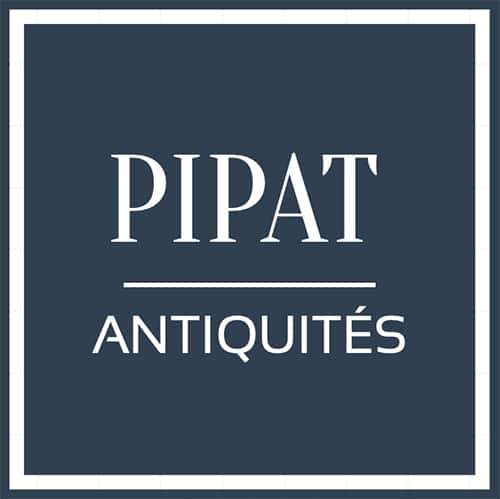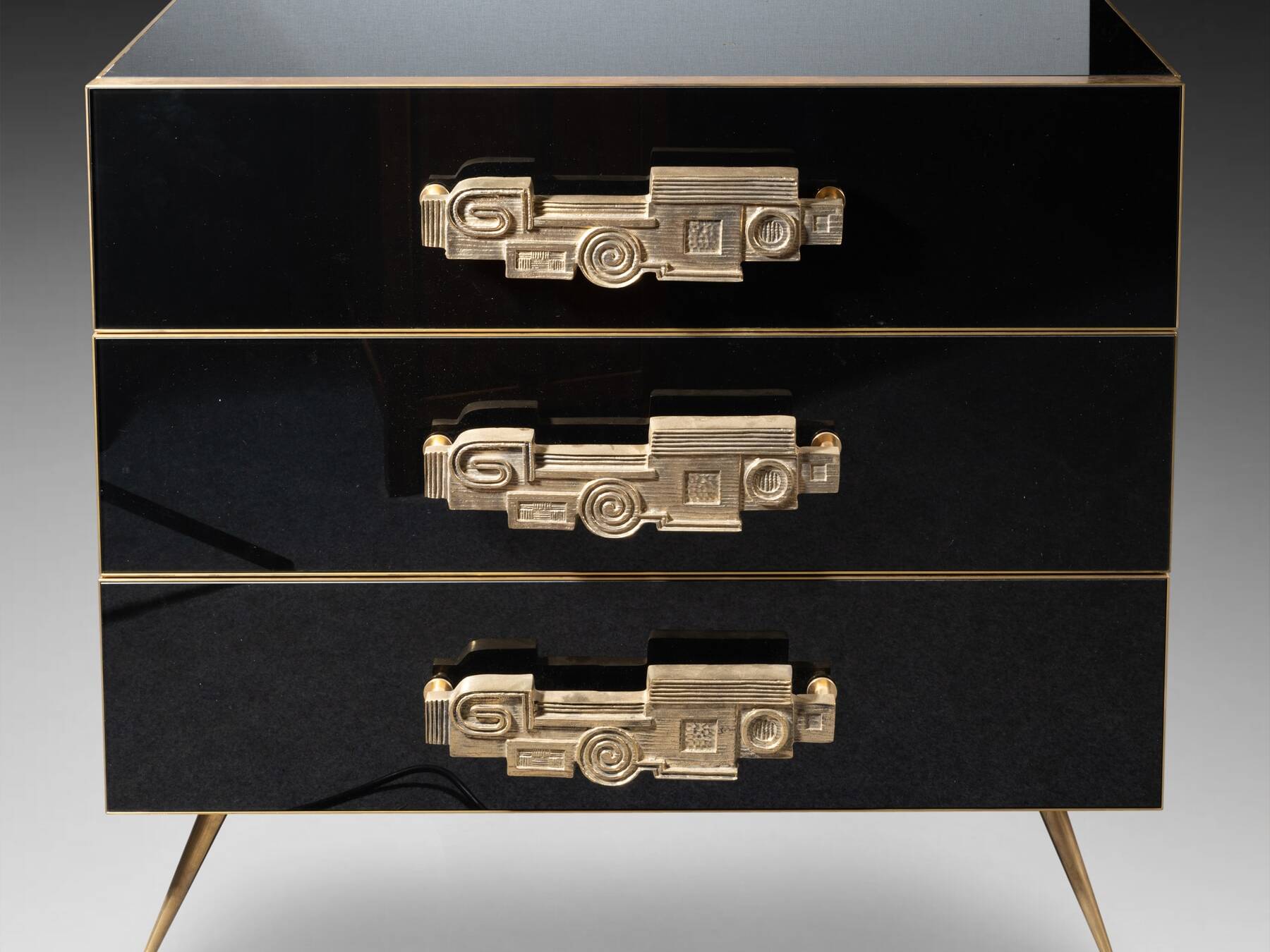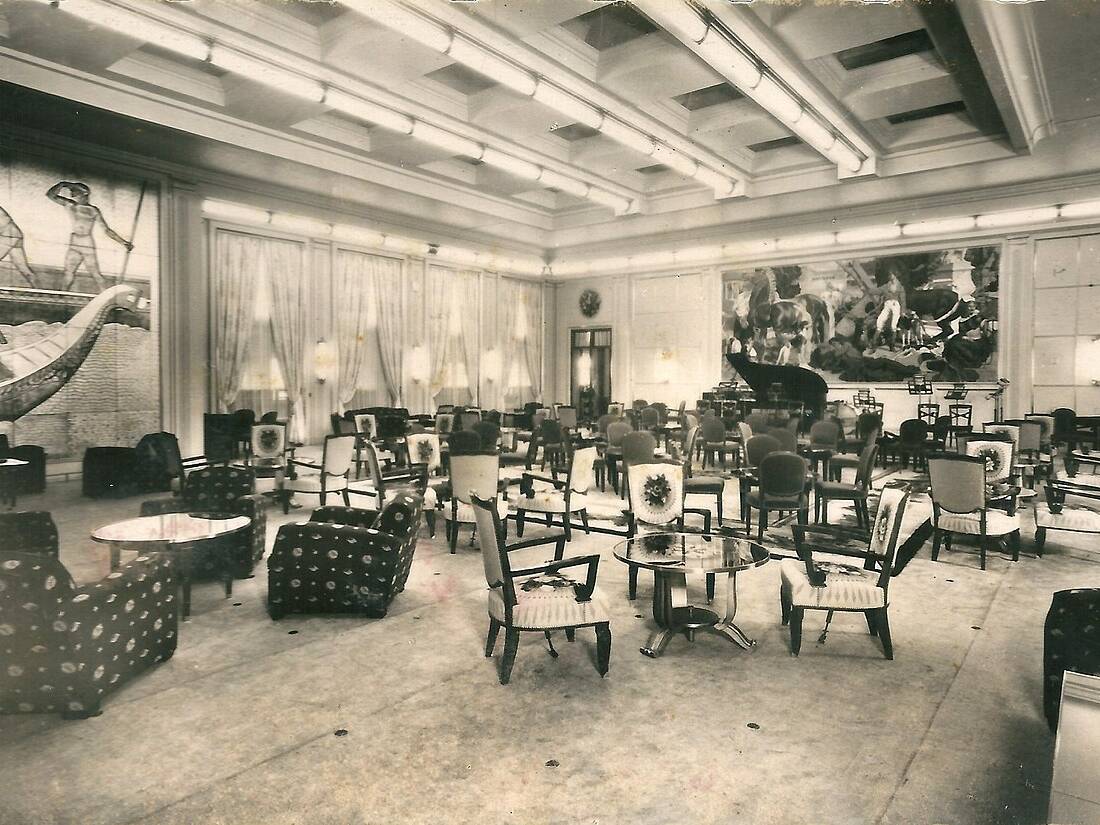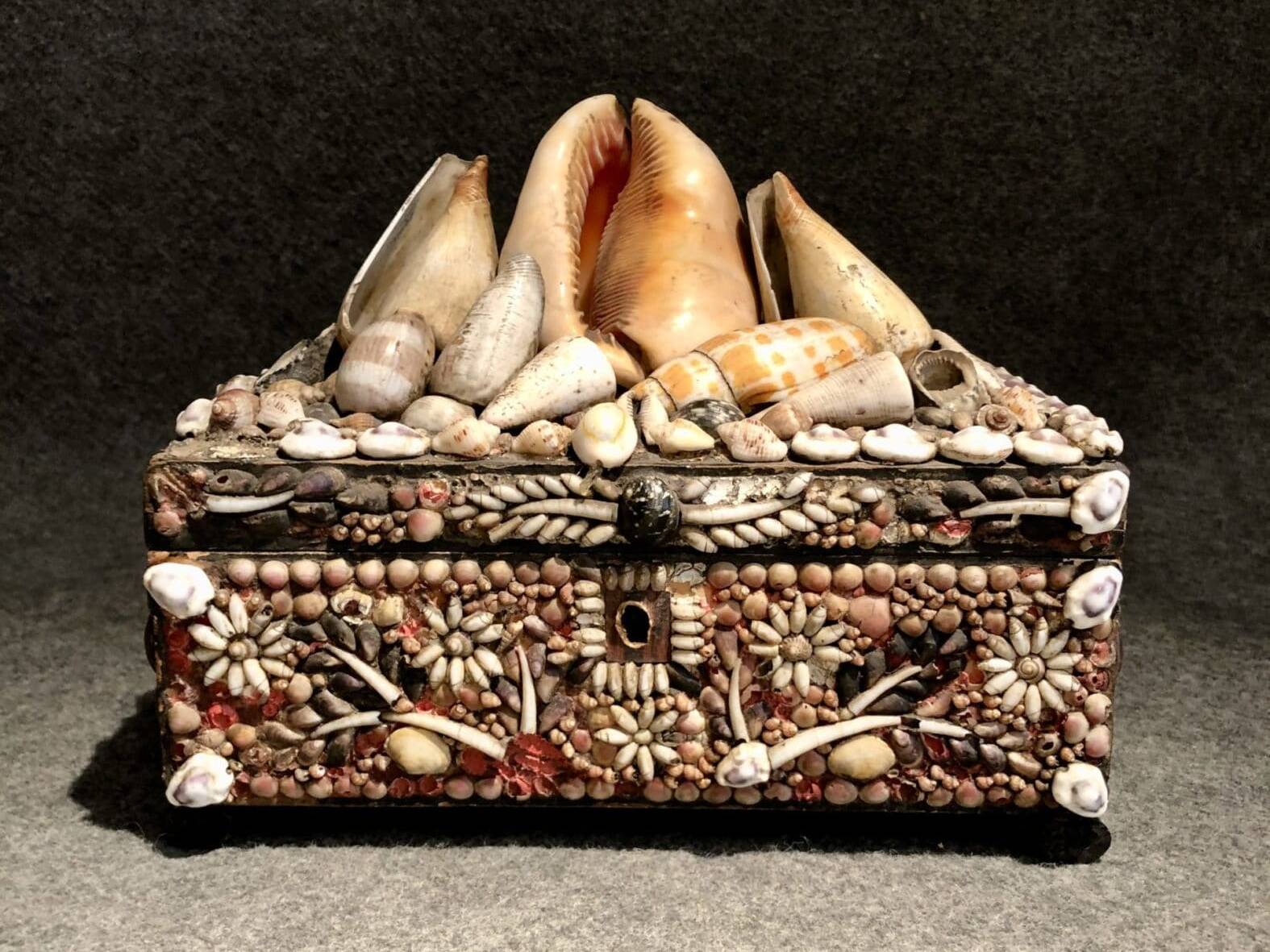Once the formerly dispersed Parisian factories were brought together in one place, Colbert placed Charles Le Brun at the head of the Gobelins. The king’s first painter instilled in it a golden age of around thirty years, arousing envy both in France and abroad. Le Brun himself supplies the new pattern for the hangings, the weavings of which follow one another at a frantic pace, both on the high and low loom. Then, 775 pieces leave the factory, 545 of which are enhanced with gold thread. The masterpieces follow one another, the hangings of the Muses, the Elements, the Seasons or The History of Alexander arouse admiration and all are to the glory of the king. Alas, this creative vitality submitted to royal power was soon to be subject to painters as well; the sawyers still kept a certain freedom on the choice of colors and the transcription of the details of the cardboard on the loom, but the 18th century would not be as permissive.
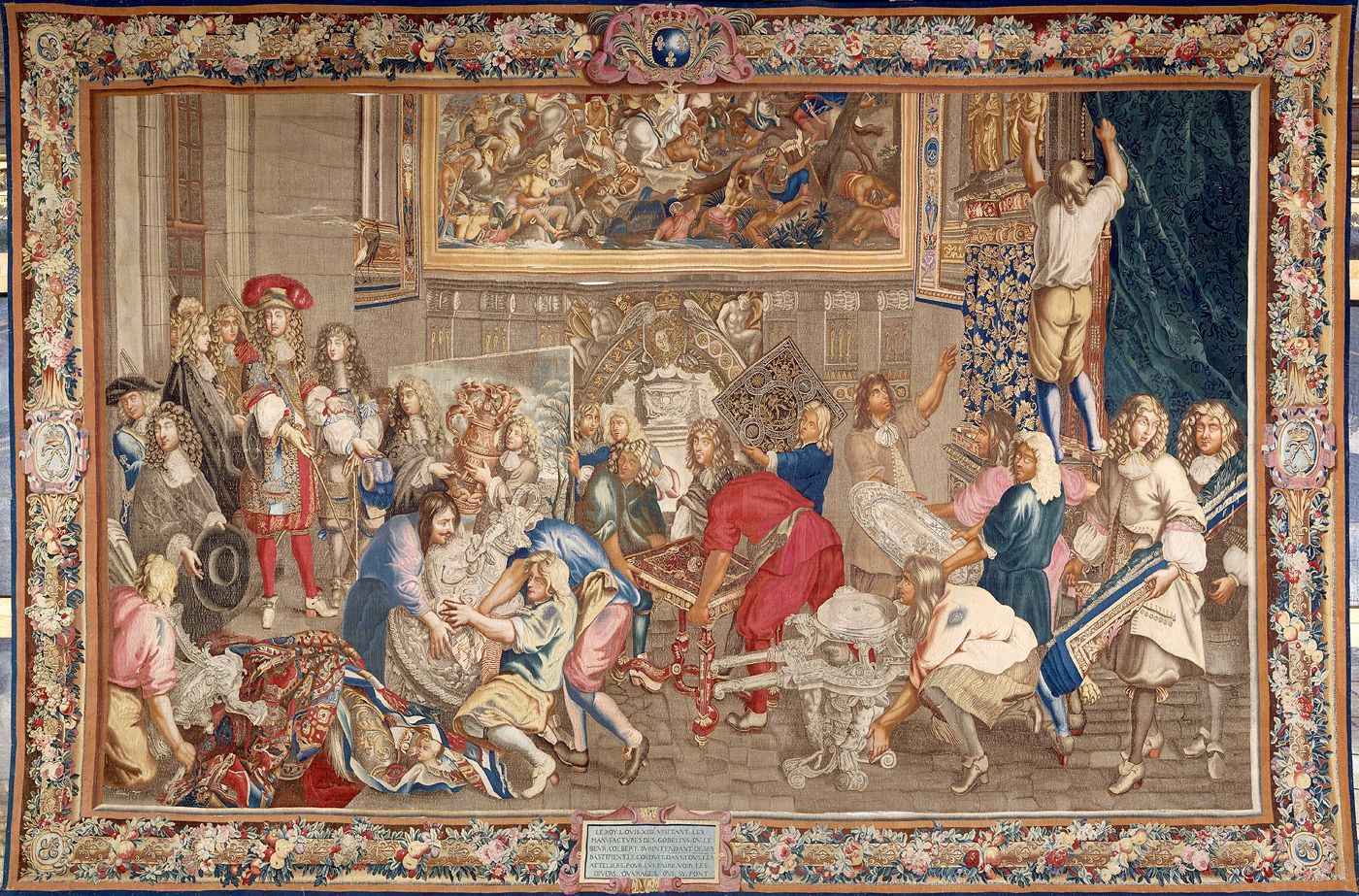
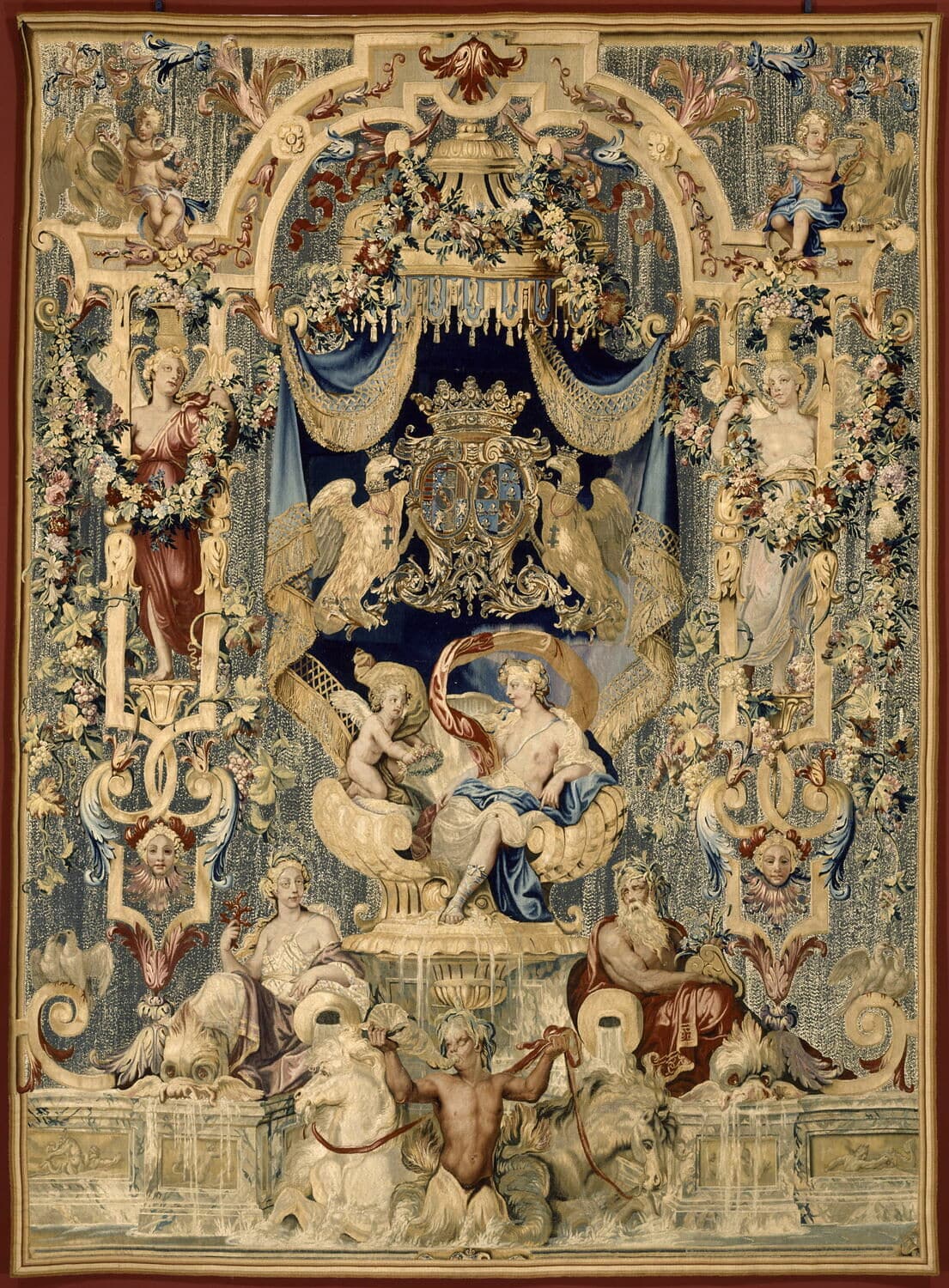
Prestigious Factory in the 18th century
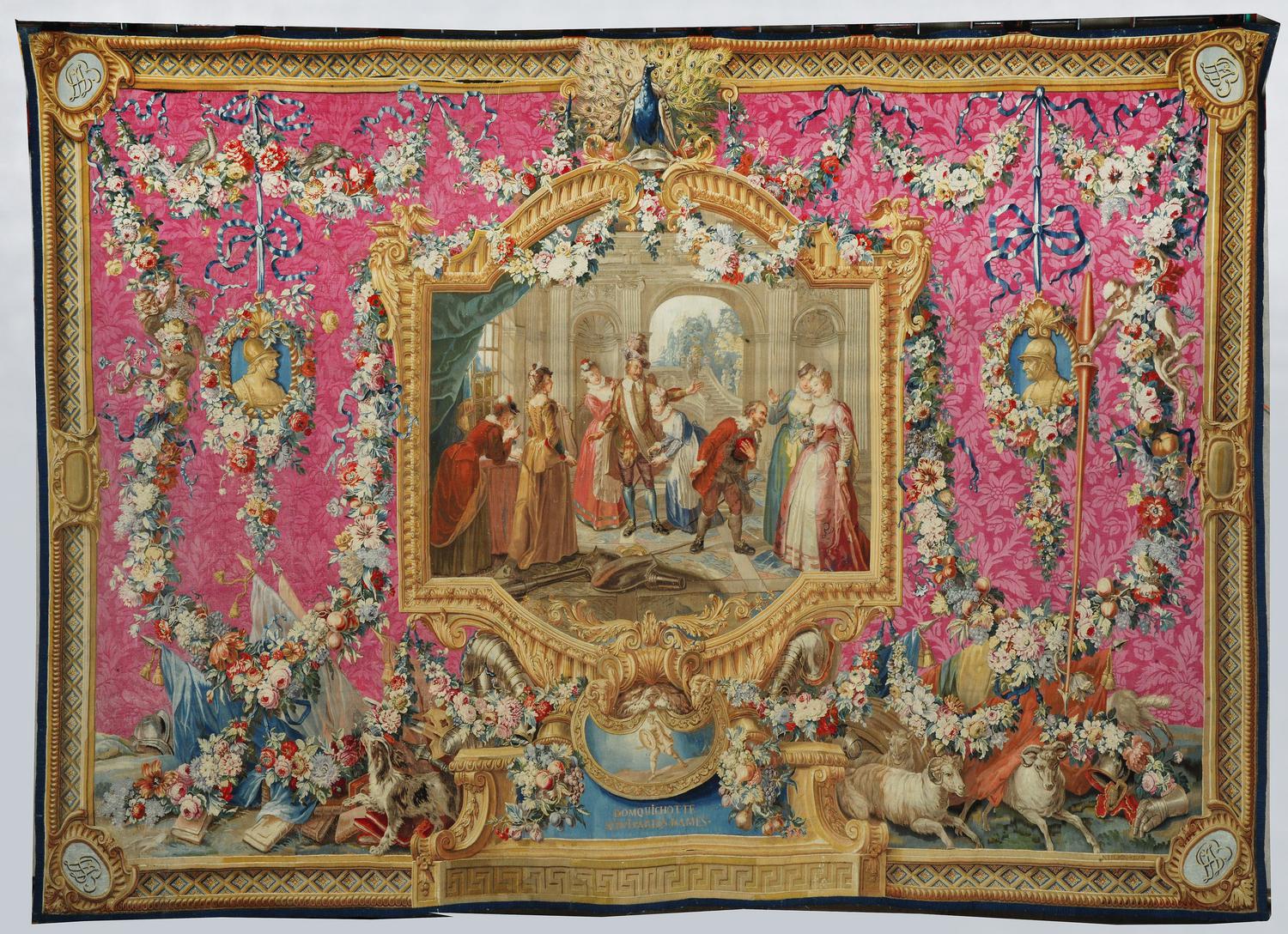
To overcome this inconvenience, the color of the tapestries was enhanced and the result deemed disastrous by Coypel who in 1737 criticized both the vulgarity of the colors and the mediocrity of the design. He is asked for his help to avoid the disintegration of the factory and his recovery helps to avoid the worst. But the end of the century questions an art that we want to be identical to painting for a much higher cost. After the Revolution, fatal to many tapestries, the Gobelins passed through the 19th century without brilliance. The low loom was definitively abandoned in 1826 while the chromatic discoveries of Eugène Chevreul simplified the task of the weaver. Production became so monotonous that the appointment of curator Alfred Darcel in 1871 and then that of Jules Guiffrey in 1893 as head of the factory breathed new life into it.
Invigorating Modernity
Finally, the uniqueness of the tapestry is recognized. The copying of paintings is gradually abandoned in favor of cardboards by modern artists such as Moreau, Chéret or Boutet de Montvel, whose manner corresponds precisely to the essence of tapestry. One advocate the simplification of the model and the palette, the enhancement of the decorative and the monumental until the International Exhibition of 1925 crowns the tapestry and restores its medieval function as a mobile partition. Shaken by this concept, which was conscientiously denied for more than two centuries, the Gobelins had to adapt to a luxury far removed from the grand settings to which they were accustomed. The creations of Jean Dunand or Paul Véra contribute in this sense to the renewed interest in tapestry as an essential part of modern interiors.

In 1936, the talented Jean Lurçat entrusted the Gobelins with his first tapestry, The Illusions of Icarus, which turned out to be just as illusory for the Parisian manufacture, from which Lurçat turned away to prefer those of Aubusson. A year later, the Gobelins are attached to the Mobilier National but it is after the war that the new woven creation awakens and attracts contemporary artists. The long exercise of transcribing their writing into weavings of excellence still unites tradition and contemporary creation today. By appropriating it, these artists underline the vitality and the durability of this art, always signed since 1889 with the monogram G crossed by a weaving brooch.
Marielle Brie
Art Historian for Art Market and Cultural Media
Author of the blog Objets d’Art et d’Histoire
Autres ressources et documentations
17 April 2025
The Middle-Ages Furniture
Rare and highly sought-after, Middle-Ages furniture is making a strong comeback. An overview of this market, where enlisting the guidance of a professional is strongly advisable.
18 March 2025
Murano Glass Furniture
Since the beginning of the 20th century, Murano glassmakers have been exploring new horizons. After classic lighting and decorative art, Murano glass is now used to adorn…
16 December 2024
A bronze triton after the sculptures of François Girardon (1628 – 1715) in Versailles
This fountain element is all the more admirable as it is sculpted after the masterpieces of the Pyramid Basin, on the parterre of the North Wing of the Versailles gardens.
18 November 2024
Tyco Bookcase, by Manfredo Massironi, for Nikol International
A pure creation of optical art research in the 1960s, the Tyco library shelf designed by Manfredo Massironi invites the viewer to bring the work of art to life on a daily basis.
3 August 2024
The Ocean Liner Style
In the 20th century, the immense ocean liners connecting the Old Continent and the New World were ambassadors of tastes and innovations on both sides of the Atlantic.
15 July 2024
An 18th Century Shell Box
From the Regency to the death of Louis XV, the art of the shell was the center of all attention.
